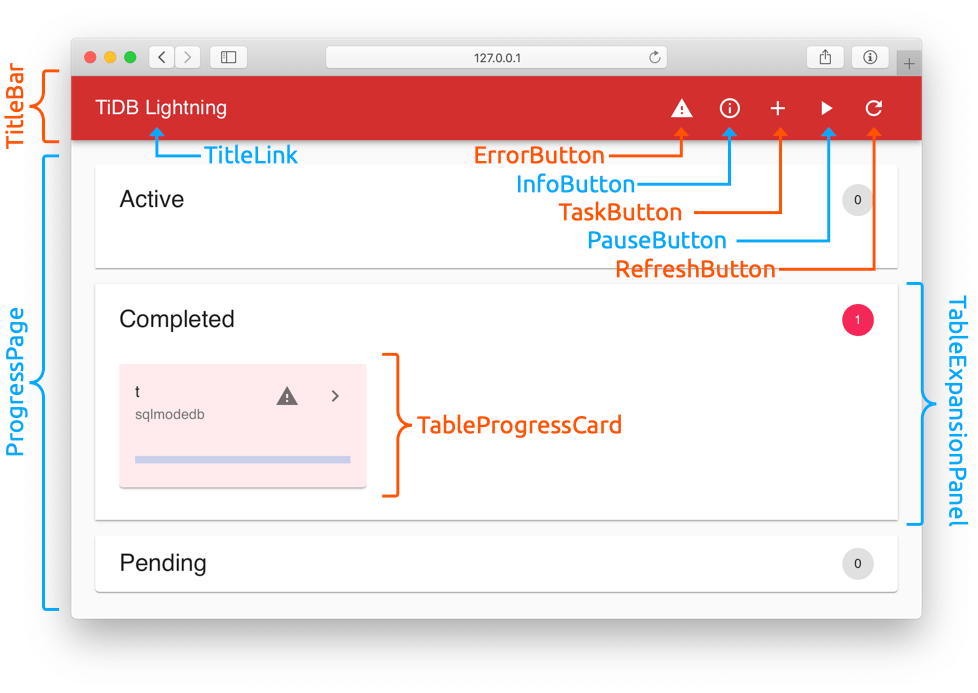TiDB Lightning provides a web interface for local monitoring task control. The app is written using Material-UI based on React.
The web app requires npm to build. It can be compiled by running webpack in
this directory
# from `web/src/*` produces `web/dist/*`
cd web/
npm install
npm run buildor, equivalently, running the make command in the parent directory.
# from `web/src/*` produces `web/dist/*`
make webThe output can be found in the web/dist/ folder. Lightning embeds the entire
web/dist/ folder into Go code via vfsgen. The web app compilation and Go
code conversion can be done via the make command
# from `web/dist/*` produces `lightning/web/res_vfsdata.go`
make data_parsersFor web development, you could build a special version of tidb-lightning which
reads directly from web/dist/ by
make lightning_for_webRun bin/tidb-lightning --server-mode --status-addr 127.0.0.1:8289, then open
http://127.0.0.1:8289/ to use the web interface.
Local development tools like webpack-dev-server are not yet supported, since
we do not allow cross-origin requests yet.
The TiDB Lightning web interface is a single-page application (SPA). The file
public/index.html is the HTML template before rendering. The actual source
code are written in TypeScript in the src/* folder.
The application is divided into 3 "pages":
The components inside the TitleBar and each page are highlighted in the above images. The associated dialogs and menus are embedded into each component directly.
The "back-end" is Lightning itself. The API defined by Lightning is declared in
src/api.ts. The corresponding server code is in lightning/lightning.go.
Unless otherwise specified, all APIs return JSON and is in the form
{"error": "message"} in case of error.
There is also an OpenAPI (Swagger) definition, but this is only a best-effort documentation of the current API. It should not be taken as a normative reference.


